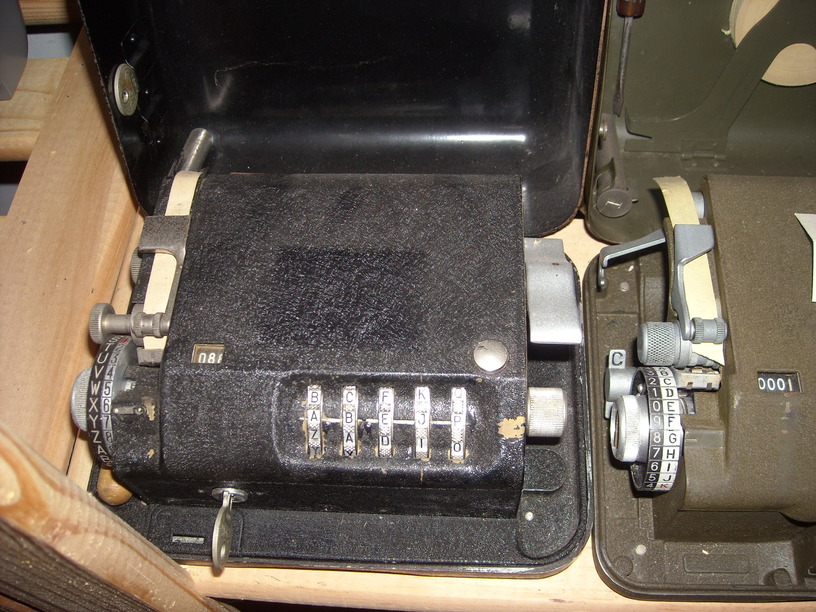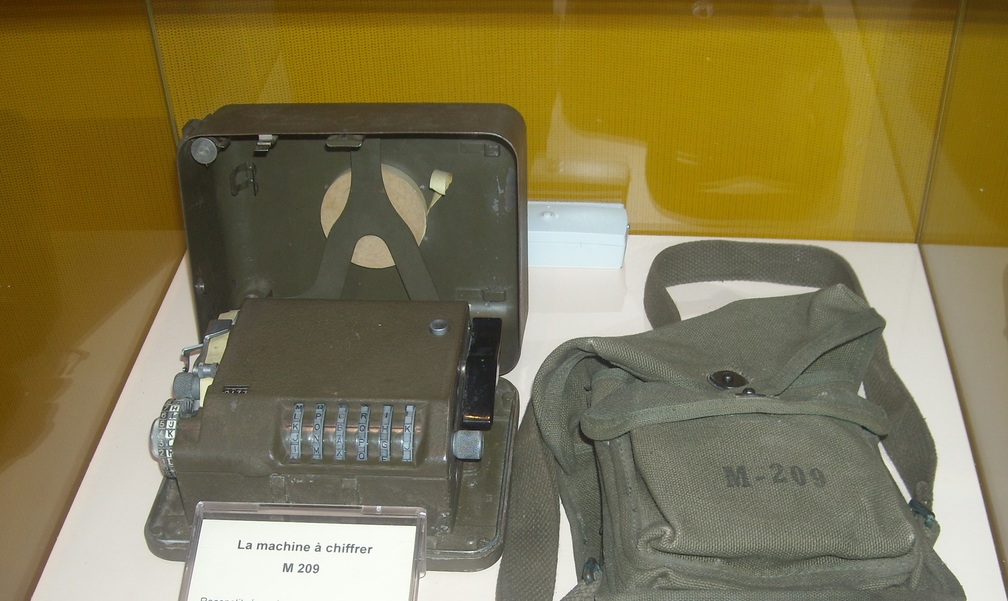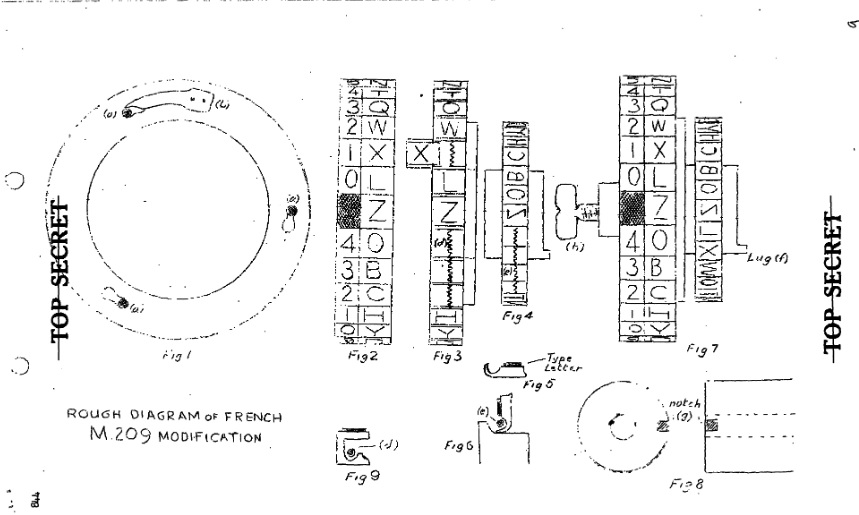M-209: French machine
Introduction
The M-209 cipher machine has been used by several armies of many countries, and among them, the French army.World War II
At the beginning of the WWII, French used two cipher machines: Hagelin C-36 (with 5 rotors) as a tactical machine, and Hagelin B-211 to most secret exchanges.After the defeat of France (June 1940), a few French gathered around General De Gaulle in London. They form the FFL (Forces Françaises Libres = Free French Forces). These forces were incorporated in British units. They have been seen as a valuable component when the French troups of General Koenig stopped Germans at Birk Hakeim in Africa (May/June 1942) and permitted British retreat and finally El Alamen victory. French used British Slidex as cipher means.
After the Anfa Convention in 1943 (Morocco), under American pressure, De Gaulle's FFL and Giraud's regular army of North Africa merged. Three components emerged:
- The French Expeditionary Corps, led by General Juin, which fought in Italy (1943/1944).
- The First French Army, led by General De Lattre de Tassigny, which landed in South of France in 1944.
- The 2nd Armored Division, led by General Leclerc, which landed in Normandy in August 1944.
After World War II
French Diplomacy
Just after the war, the French diplomacy used the machine M-209. Thus, it was used during the San Francisco Conference in 1945 by the French delegation led by George Bidault. This conference ended by UN (United Nations) creation. The US took the opportunity to listen to all the exchanges between delegations of the different countries and their governments. The messages exchanged between G. Bidault and General De Gaulle, encrypted by the M-209, has been decrypted by a US group led by Frank Rowlett.French Army
After the War, French army was equipped with several cipher machines :- B-211, for high grade exchanges.
- The C-36 and M-209 for tactical use.
In 1951, C-36 and M-209 were improved:
On both machines, the ordered alphabets were replaced by random ones.
They were specific improvements to each machine:
- Movable Lugs were added to C-36 (two lugs for each of the 25 bars). The new C-36 was called "M2" (model 2).
- A numbered annulus was added to M-209 (the old C-36 had already one).

|

|
| French C-36 next to a French M-209 |
|
During Algerian War, from 1954 to 1962, the M-209 has been used extensively.
Gradually, all these cipher machines were replaced by new ones:
- B-211 by NATO KL-7 in 1956 (during Suez crisis).
- C-36 and M-209 by Hagelin CX-52 and CD-57.
General remark: You can see that the French love Hagelin cipher machines.
The French M-209 modification
In 1951, The French modified their M-209 (they had 1800 copies) to their own purpose. In the same year 1951, the French Cipher Office ("Le Bureau du Chiffre") met US representatives and proposed them to use their modication to improve NATO exchanges. The next year (1952), NATO approved M-209 with French modification for third-level traffic.The modification consists of replacing the original fixed-slide normal alphabet print and index wheels with demountable print and index wheels of approximately the same physical dimensions as the originals, and that have radial slots in which metal type can be set so as to provide any desired sequence on the wheels.
In addition, a new setting-wheel containing the numbers in fixed numerical order has been added outside the normal wheel, which the double purpose of locking the alphabet segments in position, and providing a letter-figure simple substitution. The space-mechanism, and consequently the letter Z on the two alphabets, has remained unaltered, and the Z segments are locked in position.
The numbered annulus contains the figures 0-9, 0-9, 0-4 in order, with one blank segment coloured red. The advantage to the numbered annulus is to provide a means of encyphering digits without spelling them out. A letter such as W is taken to indicate "numbers follow", and the user then encyphers any of the alternative letters opposite the figures on the annulus.
The modification is issued as a complete unit and is easily detachable from the machine (in fact, it is the complete Typewheel). If the two alphabets (the indicating one and the typewheel one) are reciprocal, the ciphering and deciphering processes are identical.
The primary advantage of French modification is to use random alphabets rather than ordered ones. Consequently depths of two could not be read.

References
- NSA – Report on visit to French "Section du chiffre" (1951) - This article describes in details the French Modified M-209 (drawings are provided).
- NSA – Memorandum fro Director, AFSA. Subject : French modification of the M-209 Converter .
- NSA – Memorandum for secretary, U.K. Joint communication electronics commitee (1952) Subject : French Modified Converter M-209-B
- Archive.org - NSA-Friedman collection - NATO Proposal for Adoption of M-209-B, 9 Feb. 1951
- Archive.org - NSA-Friedman collection - French Modified Converter M. 209-B, 6 March 1952
- Goodreads - Quotes About U S Army - Excerpts from: James Bamford, "Body of Secrets: Anatomy of the Ultra-Secret National Security Agency from the Cold War Through the Dawn of a New Century" - J. Bamford described the French American espionage during the San Francisco Conference
- Full text of "Body Of Secrets National Security Agency NSA" by James Bamford - The San Francisco Conference